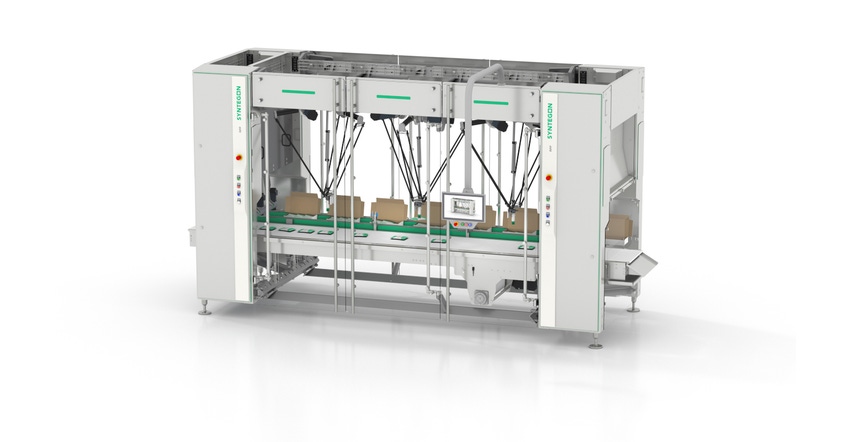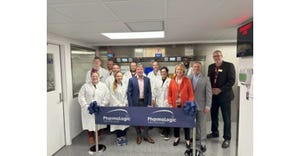Robotic pick-and-place platform for product handling, feeding, and loading
June 10, 2021

The core functions of the newly developed robotic pick-and-place (RPP) platform include quality assurance, user-friendliness and efficient production processes.
"Thanks to our proven expertise in robotics combined with industrial know-how, we can offer our customers automated turnkey solutions from a single source," said Dr. Silke Blumer, vice president strategy and product management for the food business unit at Syntegon. "We understand the food industry's requirements for machines and lines better than any other manufacturer – from process technology to primary, secondary and transport packaging."
Maximum Flexibility Thanks to Individual Configuration
The RPP platform automates process steps such as handling, feeding, and loading. The new robotics platform is designed as a modular system. This allows individual configuration of the robotic cells. "Each customer project is different. Thanks to the modular RPP platform, we can handle a wide variety of products. The Delta robots can be flexibly connected and, together with transport modules, seamlessly integrated into an overall system," explained Andreas Schildknecht, product manager robotics at Syntegon. "Together with our customers, we can automate single process steps consecutively and in line with their needs or budgets, following the principle 'build as you grow.' Moreover, the platform can be scaled to suit different production capacities, while multiple cells can be connected."
The open control software ensures the seamless integration of the Delta robots into the line. "The comprehensive integration of controls and hardware is essential for all components within the line to communicate with each other through a single control platform – and to function perfectly together," said Schildknecht. The platform--which was designed according to the latest UX aspects--ensures user-friendly operation. New features support the operators in making their daily work with the line easy and effective. The RPP cells provide excellent visibility, easy access, and efficient cleaning. The stainless steel robotic cells meet the IP65 protection class. This minimizes the risk of contamination for both current and future hygiene requirements in the food industry. The tool-free format changeover reduces downtime, allowing manufacturers to process different products on the same line and to respond quickly to changing market demands.
Automation is the Future
"The growing need for more flexibility and efficiency will be increasingly realized by integrated robotics solutions. Automation is the future," Blumer said. "With the Syntegon RPP platform, we are paving the way for future manufacturing. However, we have by no means reached the end of the road. Our unique combination of mechanical engineering, robotics and industry expertise makes the Syntegon RPP platform one step of many, albeit a very important one." In parallel, Syntegon will continue to develop further innovative automation technologies – and will soon introduce new developments to the market for the food and pharmaceutical industries.
Syntegon Packaging Technology LLC, New Richmond, WI 715-246-6511 www.syntegon.com
About the Author(s)
You May Also Like




